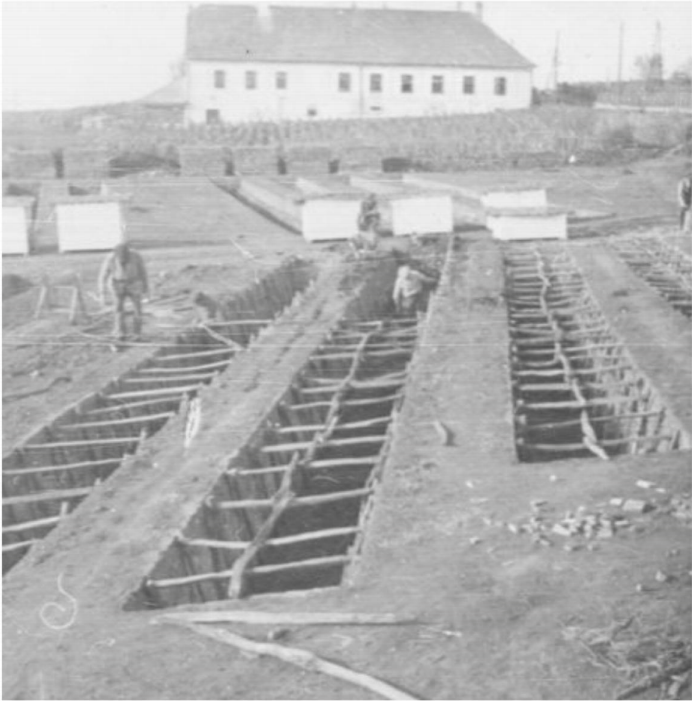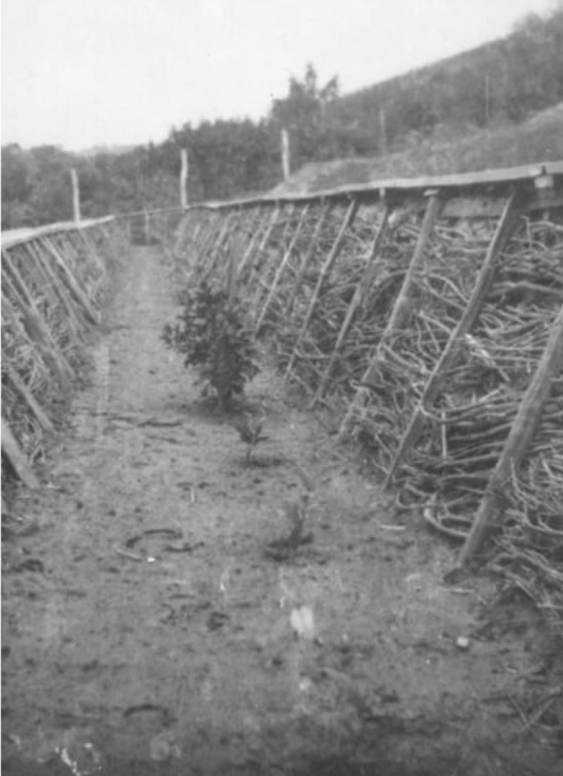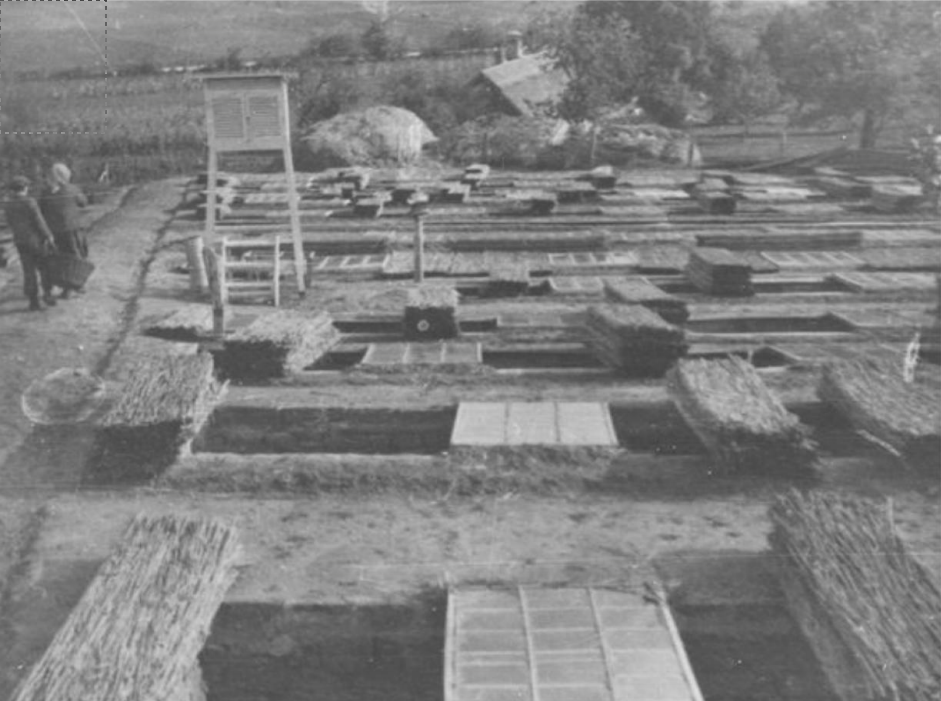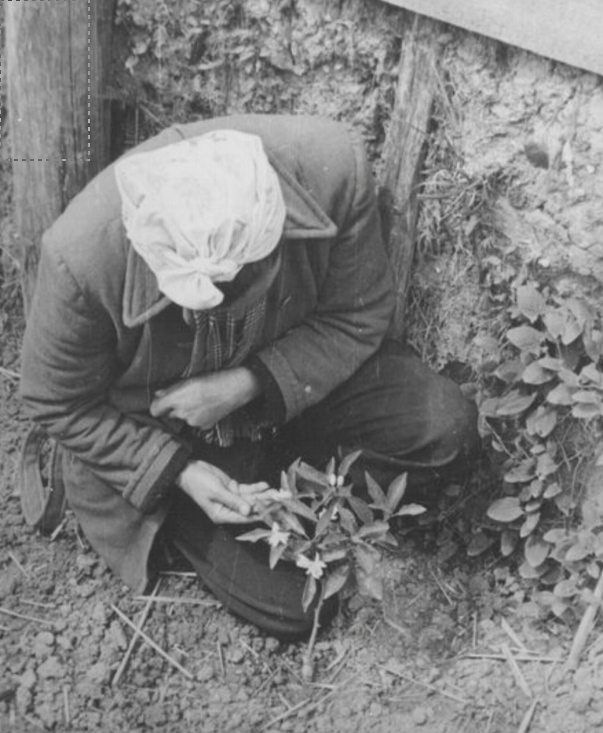Image: Works on Badacsony (Badacsony 1952).
In 2020 Low-tech Magazine published an article about “fruit trenches”. During the first half of the twentieth century, Soviet citrologists grew (sub)tropical plants in temperatures as low as minus 30 degrees Celsius – outdoors, and without the use of glass or any fossil fuel-powered assistance. They managed to do this by planting creeping citrus plants in trenches of up to two metres deep.
The success of the Soviet undertaking remains controversial. One commentator to the article writes: “I suspect you’ve been duped by the Soviet Union’s tendency to exaggerate its successes, and downplay its failures.” That could be, because there are no independent sources.
Michael Saalfeld adds: “some ten years ago I came across reports that similar methods for growing citrus were used in Hungary in the communist era”. He wrote about this in an old citrus growers forum post called ‘The Communist Oranges of Hungary”. The pictures were adapted from a publication in Hungarian, hosted at the web-site of the Elte Botanic Garden in Budapest.
“In the early 1950’s trees were planted in deep trenches, so they could be completely covered in winter. This was mainly on the south-facing slopes bordering Lake Balaton – a large area of water which provides some local modification to the cold winters.” However, this was so unsuccessful that it spawned a liberal political magazine by the name “Magyar Narancs” (Hungarian Oranges) to refer to the goofiness of the Hungarian communist system of that era.”
“The attempt was also parodied in Péter Bacsó’s famous movie: “The Witness” (1969). In one of the scenes we see a party leader visit the co-operative where scientists experiment with orange-growing and learn that the comrade would like to taste an orange. As the only ripe orange is accidentally eaten, he is given a lemon instead, accompanied by the following explanation: “Its’ the new Hungarian orange, a bit more yellow, a bit more savoury, but it’s ours.”
“Apparently ‘Magyar narancs’ is still used in Hungary as an expression meaning ‘an impossible task’ or ‘a stupid enterprise which will doubtless fail’.”
The Villány citrus plantation (1952)
Fruit trenches in Cserszegtomaj 1951-1952.
The appearance of the first flowers (Keszthely).









